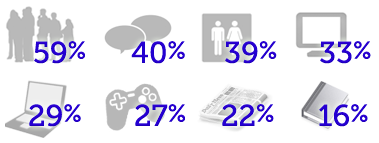Community Embraces New Word Game at Mid-Year Play Day This past Sunday, families at Takoma Park’s Seventh Annual Mid-Year Play Day had the opportunity to experience OtherWordly for the first time. Our educational language game drew curious children and parents to our table throughout the afternoon. Words in Space Several children gathered around our iPads […]
Read moreMonth: May 2011
 Swirling a tasting of beer in my plastic glass, I was curiously intrigued by the presenter’s explanations about Trappist monks breaking off from the Cistercian order, the impacts of iso-amyl acetate (banana) and ethyl hexanoate (green apple) on flavor, and how dealing with soft water led to curious additions to beer, like oysters and seawater. (more…)
Swirling a tasting of beer in my plastic glass, I was curiously intrigued by the presenter’s explanations about Trappist monks breaking off from the Cistercian order, the impacts of iso-amyl acetate (banana) and ethyl hexanoate (green apple) on flavor, and how dealing with soft water led to curious additions to beer, like oysters and seawater. (more…)
Smartphones (e.g., the iPhone or Android) are commonplace, and education outreach projects need make use of this reality. People use their smartphones while doing all kinds of things. For example:

(Left to right, top: while waiting in line, socializing, in the bathroom, while watching TV; bottom: while using a computer, playing video games, reading a paper, or a book.)
The most common place to use a smartphones is at home (93% of smartphone owners), but people use their smartphones all kinds of places: (more…)

IDEA’s second mobile app, WikiNodes (see app store link) puts the encyclopedic knowledge of Wikipedia at the fingertips of iPad users. Articles are displayed as nodes that can be touched, dragged and spun around — showing the relations between articles and sections of articles. The app is currently featured in Apple’s app store.
Here’s a 30 second demo:
The app is based on IDEA’s SpicyNodes system for displaying and navigating information using nodes (see SpicyNodes.org). The SpicyNodes approach has great potential for other subjects, from browsing museum collections and archives, to browsing flora & fauna, and many other kinds of linked data.
Virtual exhibits on tablet devices (e.g., the Apple iPad) put exhibits at the fingertips of students and the public. Visitors can browse science, art or culture from classrooms, during their commutes, or from their sofas. — But where does the money come from?
As with physical museums, the problem with charging money for downloads is limiting visitation to enthusiasts. Access must free to get significant use on tablet computers in classrooms, or by people who would not otherwise pay. Aside from grant support or advertisements, are there other revenue models? Could funding come from the community?
We posit that virtual exhibit apps could be free downloads, giving a preview teaser. Then, to see the rest of the exhibit, visitors pay for access, sponsor access for others, or request free access. Here’s how it might look: (more…)


